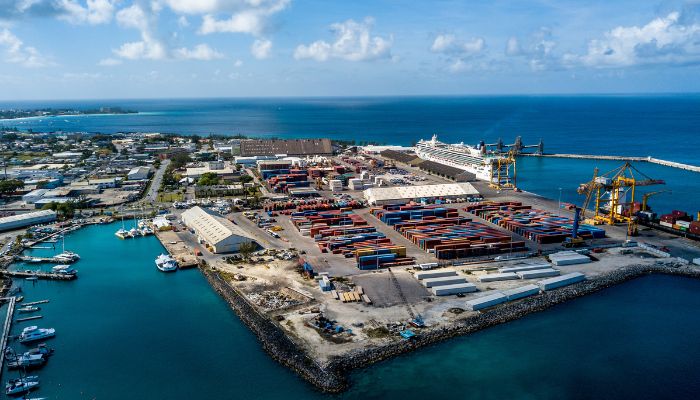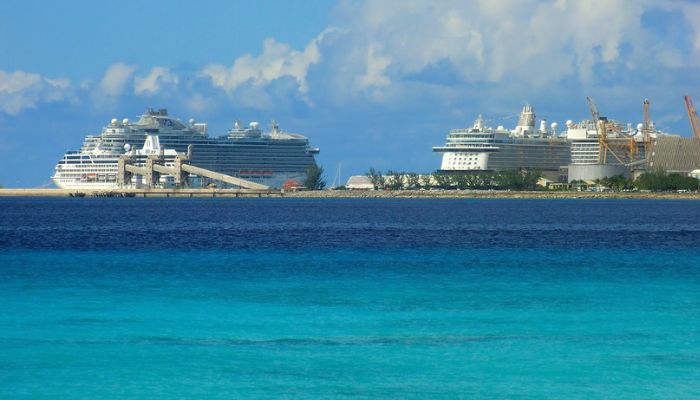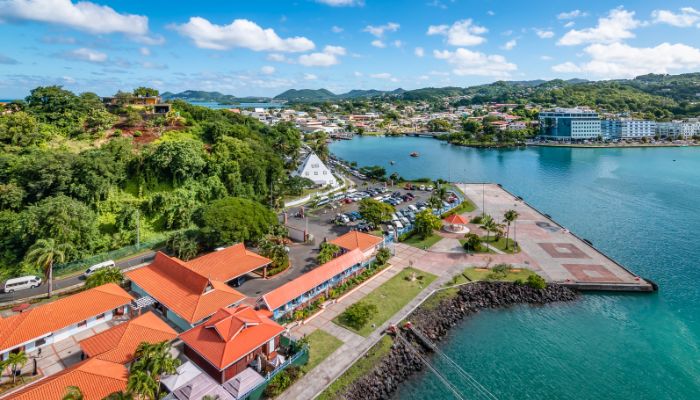

The island country of Barbados is situated in the Atlantic Ocean. It lies in the Lesser Antilles, West Indies, in the Americas, is close to the Carribean islands, and covers only 432 square kilometres of area. The nation has a history of colonisation from the 15th century onwards when it first appeared on the maps of Spain. Before that, it was inhabited by the native Kalinago tribes and the Amerindians.
Soon, it went into the hands of the Portuguese, who abandoned it soon after. In the 1600s, the English vessel Olive Blossom arrived on the island and took control of it. The first English colony was established in 1627 with settlers coming from England.
Barbados had a plantation economy and relied on the labour of Africans brought to the island as enslaved people. The slave trade continued and was outlawed in 1807.
The country became independent in 1966. Since then, it has been a high-income economy with a flourishing private sector. Tourism is also a significant driver of economic growth.
Historically, the nation has been known for cultivating sugarcane and other activities, but since the 1980s, manufacturing and tourism have taken the lead. The offshore financial sector and information services have also become essential earners of valuable foreign exchange.
The nation hosted the 2007 Cricket World Cup, which aided infrastructural growth. Many new hotels, offices, houses and buildings were built during this time. The economy, on the path of recovery from the 2007 recession, faces hardships due to the Covid-induced lockdowns, which badly impacted the tourism industry, the mainstay of the Barbados economy.
The recent government has invested in reducing poverty and unemployment and encouraging foreign direct investment while privatising state-owned companies.
Today, Barbados imports mainly consumer products, machines, foodstuff especially packaged and canned goods, chemicals, fuel, and electrical parts from the United States, Tobago and Trinidad, Britain, Canada, the Netherlands and China.
The nation exports sugar, molasses, rum, food, beverages, chemicals, and electrical parts from European countries, the Bahamas, China, Jamaica and Guyana.
Given the island’s area, it is relatively easier for people to travel and explore. Many taxis are available for rental, and people can also take public buses. However, they are usually very crowded. It has one international airport and an international seaport, the Bridgetown port, which handles cargo and cruise passengers.
Barbados Port Inc manages the only seaport on the island. It is a well-run authority which functions from the Deep Water Harbour in St. Michael Parish. The state-run agency controls and manages th shipping and immigration process on the island nation.
The Bridgetown port is a major port of entry and handles over 90 per cent of the cargo utilised by the manufacturing sector. Through this, the facility contributes to successful business operations on the island. It also welcomes cruise ships plying on the Southern Carribean route.
Bridgetown is the primary seaport and cruise port of the island. It is also the largest city and also the capital of Barbados. The Greater Bridgetown metropolitan area is located within Saint Michael Parish. Locals refer to it as the city or the town. It covers 40 square kilometres and has a population of over 100,000.


The town was founded in 1628 by settlers who came from England. Before that, the earlier settlement was in James Town. Bridgetown is a famous vacation destination in the West Indies and serves as a principal financial and convention hub. In 2011, the historic city and its Garrison were designated as a UNESCO World Heritage Site.
Bridgetown port is situated close to Carlisle Bay, on the southeastern coast of the island of Barbados. The International airport is just 16 kilometres from the port and has flights to all main cities in the region, including the USA, Britain and Canada.
Bridgetown has been a historical port in trade and commerce since colonial times. Many small settlements of merchants and traders once dotted the nearby areas. Today, it serves the island country and contains extensive facilities for handling a variety of cargo, including bulk, containers, liquid cargo and general cargo.
It was recently expanded and upgraded. The berthing facilities were refurbished, and several container berths and piers for small vessels were built.
A container freight station has been established that deals with roughly 2000 containers stacked on two rows. It also has a container berth, measuring 215 metres in length and the terminal covering 8,900 square metres of floor space.
The sugar berth is 307 metres long and 8 metres deep for accommodating tankers carrying sugar and molasses. It has five berths for accommodating cruise ships, naval ships and general cargo vessels.
Petroleum tankers are handled at the Oistins and spring garden terminals, measuring 172 m and 101 m lengthwise. Dry bulk is dealt with at the 121 m long and 10 m deep Arawak jetty.
Currently, the port mostly handles containerised cargo followed by bulk commodities like sugar, cereals, grains etc. It imports mineral fuels, petroleum goods, locally produced handicrafts and decorative items, food, light machinery and transportation equipment. Major exports include mineral oils, lubricants, packaged food, clothes etc.
Bridgetown is the only commercial port on the island, so it deals with over 1,000,000 tonnes of cargo, over 90,000 TEUs, 700 vessels and more than 550,000 passengers every year.
It has 16,220 m2 of covered storage space, including four sheds. The container storage area covers 47,400 m2, and the port has 96 reefer plugs for refrigerated cargo.
There are four tanks for keeping molasses with 12,000, 8500, 19,000 and 12,000 tonnes capacity. The bulk storage includes two silos for grains. SOL Barbados provides bunkering facilities on all berths. However, ships need to give notice before 24 hours.
Barbados is known not only for its scenic beauty and mesmerising landscape but also for the warm and welcoming locals. As passengers disembark from cruise ships, they are given a cheerful welcome by musical performers who entertain the guests from the quayside. There is a local music band, dancers, singers and other entertainers.
The cruise facility serves the island and is managed by Bridgetown Cruise Terminals Inc. The Deep Water Harbour has been operational since 1994 and has been upgraded recently. It has four deepwater piers with a capacity for six vessels at once. They are called berths two, three, four and the sugar berth.


The terminal has modern facilities, a health centre, a customs office, an immigration department, a quarantine centre for animals, a tourism office and a post office. It also houses several cafes, restaurants, business facilities, craft shops, duty-free shops, car rental offices and a free internet zone. There is a departure terminal for guests who pre-book shore excursions and tours on the island.
It has a total area of about 60,000 square ft and 20,000 square ft dedicated to the shopping complex. The Chattel village, or the famous Barbados marketplace, is just outside the port complex.
The Garrison is a designated World Heritage Site, founded to serve as the headquarters of the imperial military in 1780. It houses the country’s defence forces, and close to it are the George Washington House, St. Ann’s Fort, the National Armoury and Savannah park.
The public buildings dating between the 1870s to 1890s built in coral limestone in the neo-gothic style are a sight to behold. Apart from them, the House of Assembly and the National Gallery are architectural gems. There is also an ancient clock tower.
The National Hero Square, also called the Trafalgar square has three sculptures. One belongs to the Barbadians killed during world wars. Close to this place is St. Michael’s Cathedral dating back to 1789. It is made of beautiful coral stone. Nidhe Israel Synagogue is one of the oldest synagogues, built in the 16th century. It is also a UNESCO world heritage site.
Barbados Museum has many exciting exhibitions. Lastly, Barbados has many beaches, namely the Gold coast beaches, perfect for water sports lovers, the Brighton beach, Paradise beach and Bathsheba beach.
St Charles is a luxury yacht marina on the island’s western coast. It is a part of the St Peter’s parish in Heywoods, close to Speightstown. The port spans 1550 square meters and contains an inland lagoon with a water depth of 14 feet during low tides.


People can berth their vessels near their vacation villas. It is a perfect resort for a short holiday or a weekend getaway. The berths measure 30 to 110 ft lengthwise and are equipped with water, electricity supply, internet etc. There are six berths for accommodating mega yachts situated near the offshore breakwaters, designed by HCCL, based in Canada.
There is a heliport for transporting visitors to the airport. Apart from the heliport, a health spa and the Tom Snooch Reef are popular spots close to the coast.
You might also like to read-
Disclaimer: The authors’ views expressed in this article do not necessarily reflect the views of The Marine Learners. Data and charts, if used, in the article have been sourced from available information and have not been authenticated by any statutory authority. The author and The Marine Learners do not claim it to be accurate nor accept any responsibility for the same. The views constitute only the opinions and do not constitute any guidelines or recommendations on any course of action to be followed by the reader.
The article or images cannot be reproduced, copied, shared, or used in any form without the permission of the author and The Marine Learners










We believe that knowledge is power, and we’re committed to empowering our readers with the information and resources they need to succeed in the merchant navy industry.
Whether you’re looking for advice on career planning, news and analysis, or just want to connect with other aspiring merchant navy applicants, The Marine Learners is the place to be.